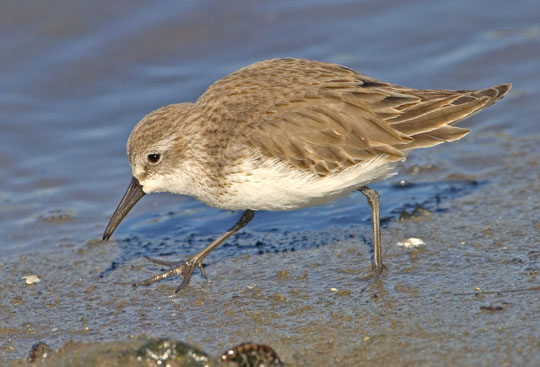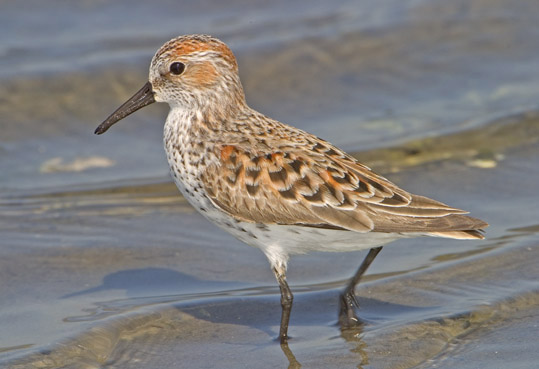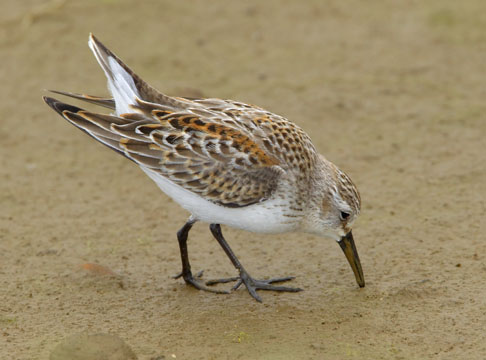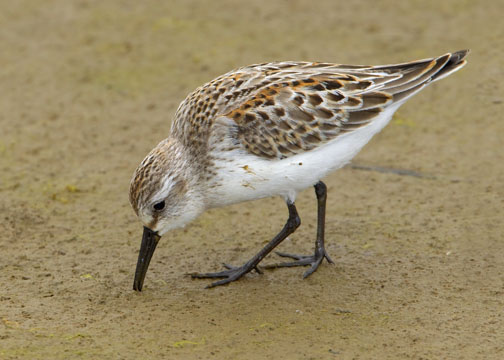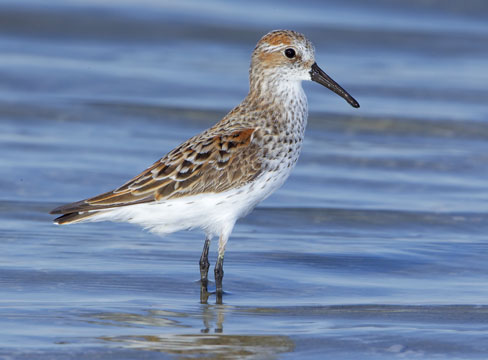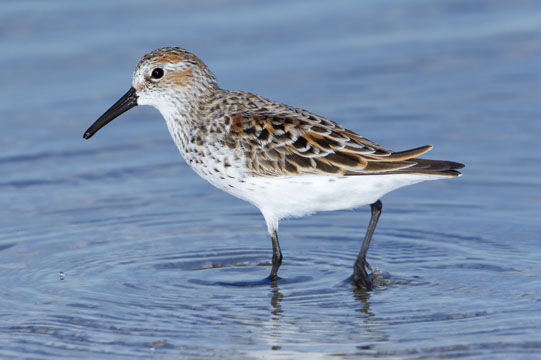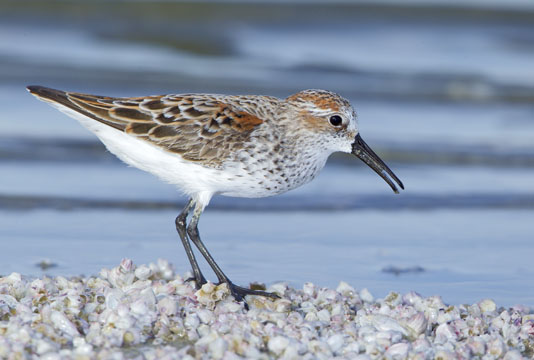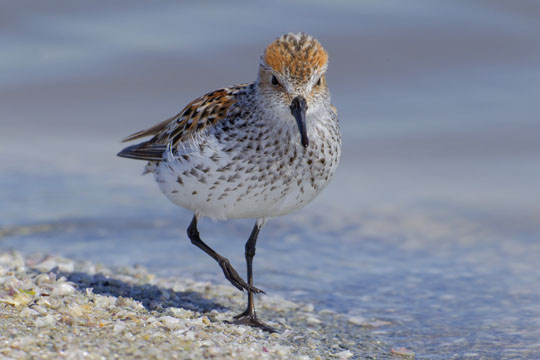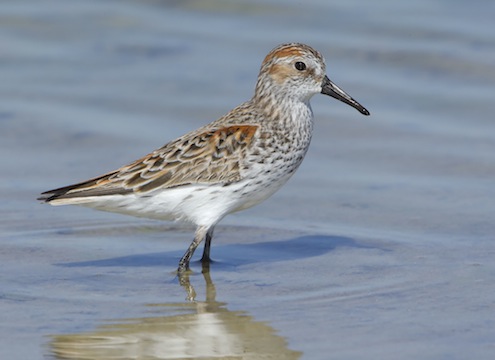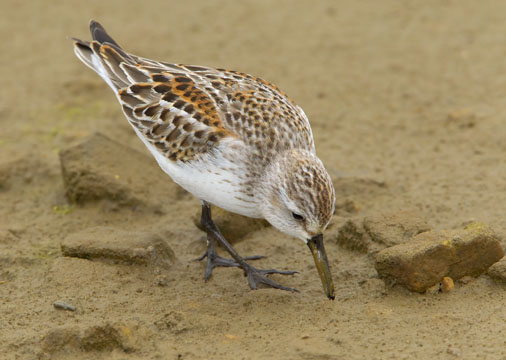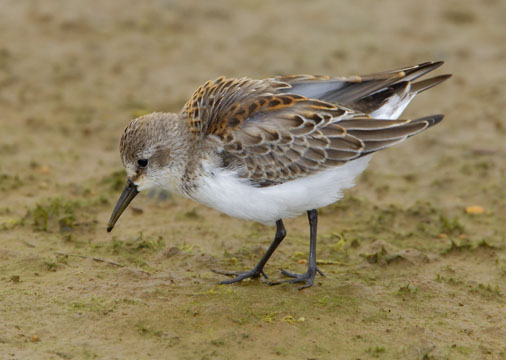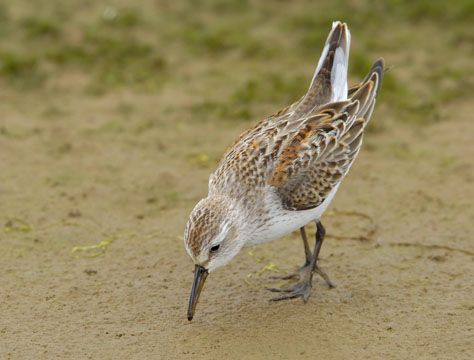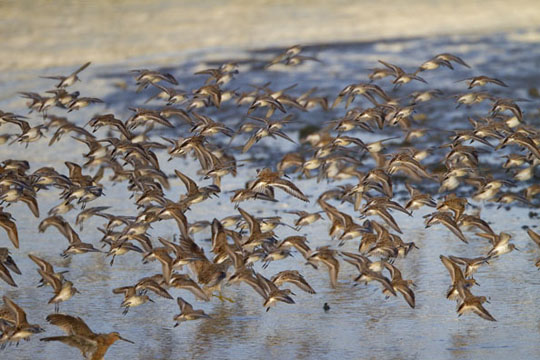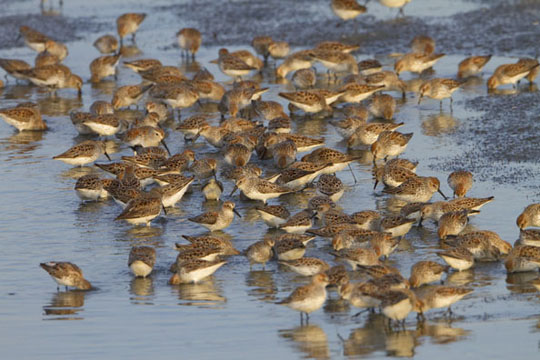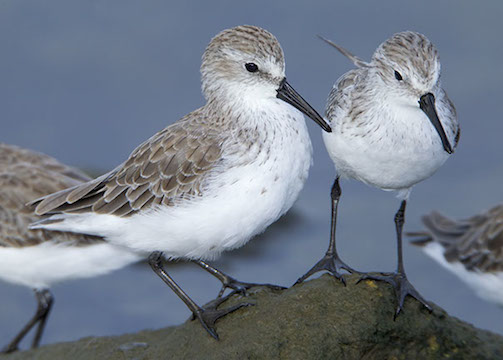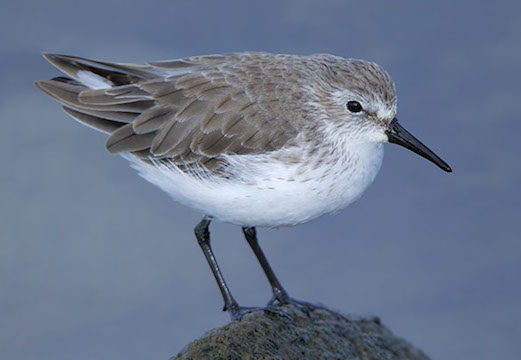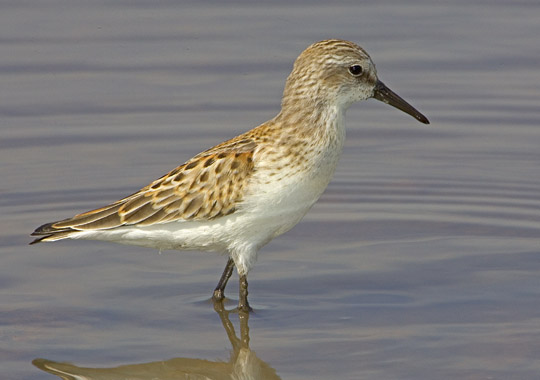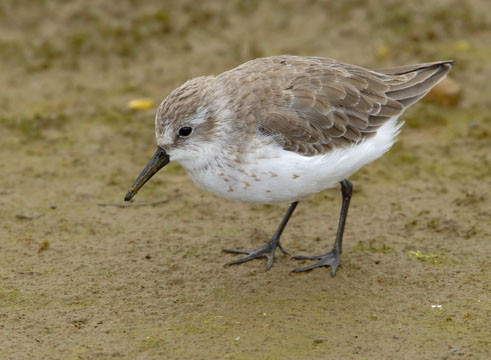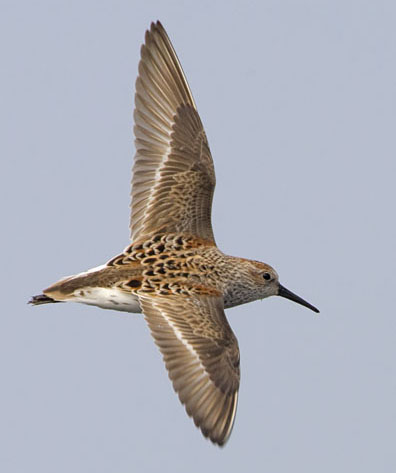 |
 |
|
|
|
|
Like most 'peeps,' western sandpipers alternate between a fairly drab winter ('basic') plumage (as in the upper left image) and a much brighter breeding ('alternate') plumage. Winter-plumaged adult westerns are grayer than the similar least sandpiper and have longer bills and dark legs; they can be separated from dunlins by smaller size and shorter, less 'droopy' bills. Juvenile birds (immediately below) have some bright rust color on the back, but lack the rusty cheeks of breeding adults. The bird in the upper right image, and those in many of these images, are adults most of the way through their spring molt and showing the bright rusty highlights on the crown and cheeks and camouflage back pattern characteristic of breeding plumage. Most of these sandpipers were foraging along the shore at Bolsa Chica wetlands in coastal Orange County, California; others were along the shore of the Salton Sea in southeastern California. At bottom left is a picture of a late-winter immature bird, and at bottom right is another winter adult. More photos of this species are on this page; images of a roosting flock at dusk are here, juvenile birds are here.
|
|
|
|
